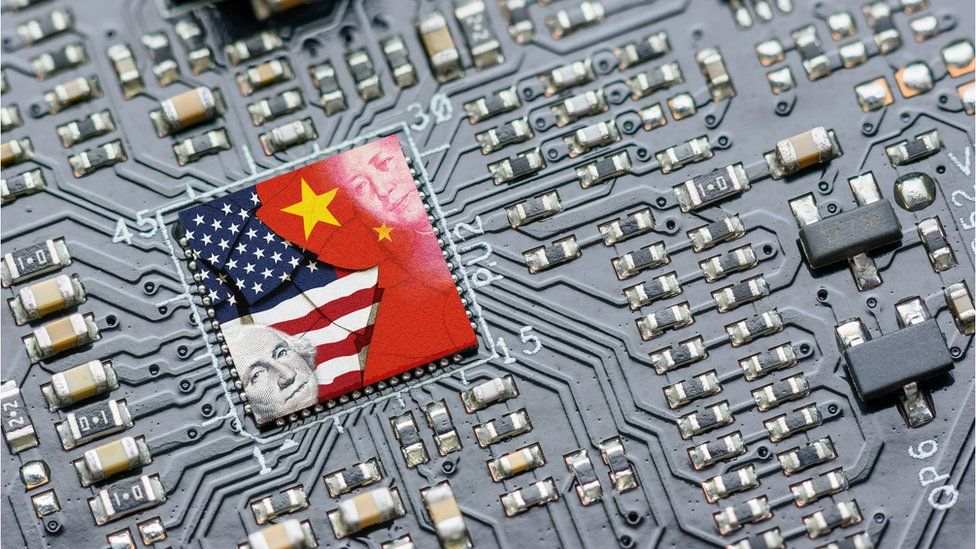U.S. versus China: It’s the Microchips This Time
Economics
2023/04/16

1
04/16/2023
The 1980s was the peak of Japan’s semiconductor industry, with nearly 50% of the global market share and 80% specifically for DRAMs (Dynamic random-access memory). However, the U.S. was not happy about this growth as it was only possible after the U.S. disclosed its semiconductor patent. As a result, in 1985, semiconductor companies in the U.S., such as Intel, Micron, and AMD, started their retaliation by accusing Japanese companies of dumping, which is when manufacturers export a product to another country at an abnormally low price. The U.S. government signed the Plaza Accord in 1985, the first U.S.-Japan semiconductor agreement in 1986, section 301 of the Trade Act of 1974 (Super 301) in 1987, and the second U.S.-Japan semiconductor agreement in 1991. This series of retaliations was enough to make Japanese semiconductor companies collapse.
The U.S.'s attack on Japan’s semiconductor industry interestingly resembles the current hostile relationship between the U.S. and China. With China’s ever-growing manufacturing capabilities, its semiconductor industry is developing faster than ever. To become victorious in the current U.S.-China power struggle and remain the greatest power in the microchip industry, the U.S. is devising policies to halt the growth of China's microchip industry.
As China tried to escape the global supply chain of semiconductors led by the U.S., the government had to develop its technology, including essential materials like silicon carbide and precise manufacturing equipment. However, China had a difficult time making up for its enormous deficit that other countries built over decades. As a result, the Chinese government supported companies to begin IP theft in the chip industry, stealing key technology from the trade partners of the U.S.. For instance, Zongchang Yu, a former employee of the Dutch microchip company ASML, became the CEO of his own software company in China with the help of the government. His company had products similar to ASML. Also, China has attempted to hack important information from Taiwanese companies like TSMC, which is well-known to have one of the best semiconductor manufacturing technologies.
Although this bold move allowed the rapid growth of semiconductor technology in China, the U.S. started to consider China as a competitor and a threat. In the 1980s, because Japan was an important ally of the U.S. at that time to stop the spread of communism, the goal was to break down the dominance of Japan through one-on-one policy, instead of completely demolishing its industry. In contrast, the CHIPS Act of 2022, a law aimed at pressuring the Chinese microchip industry, states that global semiconductor companies that receive financial support from the U.S. government are not allowed to benefit from the technology or manufacturing in China or any other country of concern for 10 years. This law is called the “China Guardrail Policy” as the goal is to completely isolate China with the help of other countries, including Taiwan and Korea, which would be forced to build their factories in the U.S. instead of cooperating with China.
In addition, the U.S. government plans to revive its semiconductor manufacturing industry with its $52 billion budget from the CHIPS Act of 2022. The budget is planned to be used for building a robust supplier ecosystem, R&D facilities, and specialized infrastructure. Gina Raimondo, the U.S. Secretary of Commerce, specifically mentioned, “We sacrificed our manufacturing capacity and workforce in the mistaken belief that we could somehow maintain our technological leadership without them.” The previous Trump administration had the goal of “not losing many billions of dollars on trade with virtually every country it does business with” and began the trade war between the U.S. and China. In contrast, the Biden industry is not only continuing the competition against China but also trying to revive the manufacture of microchips that have been slowly losing out to Asian competitors for more profit in global trading.
The outcome of this conflict remains uncertain, but it is clear that both the U.S. and China are heavily invested in the success of their microchip industries. As China seeks to become a dominant player in the field, the conflict between the two countries is likely to become worse. Unlike Japan, China has no reason to accept the retaliations of the U.S. as China is rising as the main enemy of the U.S. after the fall of the Soviet Union. The microchip industry is just a small part of the enormous U.S.-China power struggle, and their conflict would take a long time to resolve.
Robinson Review Favorites
Songi Chai, Yubin Cho, Seohyun Jang..
Economics

Trending on Robinson Review
Robinson
Contact Us






